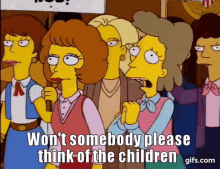I Read the President's MAHA Commission Executive Order So You Don't Have To
Here's what to expect, and what I think we can do
This won’t be another post-mortem about how we got here.
What’s done is done, and neither RFK Jr. nor the Make America Healthy Again (MAHA) movement is going anywhere anytime soon. Let’s talk about what comes next.
On Thursday, February 13, 2025, the Senate confirmed Robert F. Kennedy Jr. as President Trump’s health secretary. Final vote: 52-48 with Senator Mitch McConnell as the lone Republican to vote against the confirmation. RFK Jr. was sworn in later that same day and within hours, The White House issued the “Establishing the President’s Make America Healthy Again Commission” Executive Order.
There’s been a slew of executive orders signed in the first few weeks of the second Trump administration. So many, in fact, it’s been overwhelming to try to keep up. This “flood the zone” strategy is meant to create chaos and confusion. It may be working, but there are also countless people toiling behind-the-scenes in opposition.
One example is how purged Centers of Disease Control (CDC) data is being salvaged and hosted on independent websites. Additionally, on February 10 we had a small win when federal district judge Hon. Angel Kelley issued a temporary restraining order (TRO) to block efforts to slash indirect funding for National Institutes of Health (NIH) research.

It might not feel like it, but Trump’s polices are deeply unpopular. In some cases, probably illegal. Many, many people are speaking out and taking action to resist. And for me, it starts with staying informed.
So let’s review this MAHA Commission executive order to be more informed about what we can expect in the near future. But don’t just take my word for it. You can easily access and read the full EO here.
Right off the bat, the EO launches into a long list of statistics meant to show how badly the MAHA Commission is needed. In Section 1: Purpose, we see statements such as:
American life expectancy significantly lags behind other developed countries, with pre‑COVID-19 United States life expectancy averaging 78.8 years and comparable countries averaging 82.6 years.
Six in 10 Americans have at least one chronic disease, and four in 10 have two or more chronic diseases.
Across 204 countries and territories, the United States had the highest age-standardized incidence rate of cancer in 2021, nearly double the next-highest rate. Further, from 1990-2021, the United States experienced an 88 percent increase in cancer, the largest percentage increase of any country evaluated.
These are all direct quotes, and it feels pretty alarming. None of this paints a pretty picture of healthy Americans, or a healthy America. Focus then turns to the nation’s kids:
This concern applies urgently to America’s children. In 2022, an estimated 30 million children (40.7 percent) had at least one health condition, such as allergies, asthma, or an autoimmune disease. Autism spectrum disorder now affects 1 in 36 children in the United States — a staggering increase from rates of 1 to 4 out of 10,000 children identified with the condition during the 1980s. Eighteen percent of late adolescents and young adults have fatty liver disease, close to 30 percent of adolescents are prediabetic, and more than 40 percent of adolescents are overweight or obese.
The EO cites concerns about prescription medication, noting that 3.4 million children are now taking medication for ADD/ADHD, an increase from 3.2 million children in 2019-2020.
So why worry? What’s the top concern? It’s laid out in the next paragraph:
This poses a dire threat to the American people and our way of life. Seventy-seven percent of young adults do not qualify for the military based in large part on their health scores.
Ahhh, yes. The good ol’ military-industrial complex, with its voracious and relentless appetite for our tax dollars and economically vulnerable patriotic youth. To frame this as a national security threat means it’s all but guaranteed to garner widespread support from policymakers and the public alike.
What must be done? According to the MAHA Commission, the private and public sectors must unite and re-direct national focus toward “understanding and drastically lowering chronic disease rates and ending childhood chronic disease.”
This includes fresh thinking on nutrition, physical activity, healthy lifestyles, over-reliance on medication and treatments, the effects of new technological habits, environmental impacts, and food and drug quality and safety. We must restore the integrity of the scientific process by protecting expert recommendations from inappropriate influence and increasing transparency regarding existing data. We must ensure our healthcare system promotes health rather than just managing disease.
That’s a bunch of word salad piled high with buzzwords that sound really good. Like, who among us doesn’t want “fresh thinking” on these things? Why wouldn’t we want safer, higher quality food and drugs? Why not include the environment, I hear that’s already kind of a big deal. And what kind of person wouldn’t support a movement that prioritizes the health and safety of children?!
Here’s the thing: you can listen to what someone says. Or you can watch what they do.
At every turn, the Trump administration and MAHA movement stoke moral panic to distract from what they’re doing, which undermines each and every one of the stated goals in this executive order. But you might not guess that from the strongly-worded policies listed in Section 2.
It seems like the MAHA Commission will:
Empower Americans by making all federally funded health research transparent and open-source, while getting rid of conflicts of interest that “skew outcomes and perpetuate distrust".
Make gold-standard search the priority at the NIH to figure out why Americans are getting sick.
Work with farmers to ensure our food is the “healthiest, most abundant, and most affordable in the world”.
Make it easier to prevent disease and live a healthy lifestyle by expanding treatment options and provide flexible health insurance coverage benefits.
Again…nice little serving of word salad that contradicts what’s really happening.
Conflicts of interest are already monitored and frequently reported. Read any research paper, and a COI disclosure is in there. Financial bias isn’t the only type of bias that comes up in research, and just because you buck up the money to pay for a study doesn’t mean you get a say in how that study is designed or conducted. You really don’t get a say in how the data is interpreted. You *might* be able to fluff it up in a press release or go on a media blitz if you got the results you were hoping for. Time and resources might be better addressed by closing the revolving door of lobbyists to regulators back to lobbyists. Not to mention the many other conflicts of interest displayed by both top MAHA supporters and Trump’s inner circle.
We already have a lot of gold-standard research. NIH-grants are highly coveted and notoriously difficult to get, with that funding reserved for top researches in established labs that have the labor and resources to actually do top-quality research. Not to mention, there’s literally entire libraries and digital databases filled with papers documenting the reasons people get sick. What we don’t have is enough awareness of social determinants of health (SDoH), but that’s a rant for another day.
We already have some of the most healthy, high-quality, safe food in the world. I wrote about this last year (link below). We have some of the strictest regulations in the world, as well as a reliable way to issue recalls and public health alerts for foodborne illness outbreaks and other food safety issues (at least, we did). What we struggle with is getting healthy, high-quality, safe food to everyone. Food- and nutrition insecurity is a major issue in every community in America (that means yours, too!) yet policies like regressive taxes on soda, stripping funding from SNAP and WIC, and consolidation in the grocery retailer industry means more and more people can’t afford and can’t access what they need to prevent or manage chronic disease through diet and nutrition. As for farmers? Although the majority of rural Americans lean conservative, Trump’s policies are actively harmful for many of them as well.
And wow, it sure would be great to have the flexible health insurance benefits they talked about. But this is America, and we can’t have nice things in a for-profit healthcare system. What good are expanded lifestyle benefits if your claims for cancer treatment are denied repeatedly?
It’s hard to put into words how enormously frustrating it is to see the efforts of the health and science community undermined like this. I won’t dwell here because it’s just too dark and I can’t stay stuck there.
What I can do is share what’s coming next. First, we’re going to see a couple of key reports come out in the next few months:
Within 100 days, the MAHA Commission will submit the Make Our Children Healthy Again Assessment. Within 180 days, they’ll submit a Make Our Children Healthy Again Strategy. I really encourage you to get into the executive order and see for yourself what they’ll be looking into.
But I think one of the most important lines in the entire EO is this one:
The Chair may hold public hearings, meetings, roundtables, and similar events, as appropriate, and may receive expert input from leaders in public health and Government accountability.
What does this mean?
It means we have an opportunity to stay involved and demand accountability.
If, as the EO suggests, the assessment will be looking at existing Federal programs and funding intended to prevent and treat childhood health issues for their scope and effectiveness, we get loud and stay loud about the benefits of feeding children at school. We share stories (not just data and facts) about the impacts programs like SNAP and WIC have on families everywhere. We continue to call out the hypocrisy of a party that claims to be “pro-life” yet refuses to protect them from gun violence and abuse or neglect.
We need to be ready. It didn’t make a difference before the RFK Jr. confirmation, but these roundtables and hearings cannot be a pep rally for MAHA enthusiasts only. Professional organizations like the Academy of Nutrition and Dietetics better be paying attention, especially since leadership seems to believe there’s an opportunity to advance if they bend the knee.
Here’s what else I think is coming our way:
More misleading statistics and data shared with no context
This has been in the playbook for ages. Fearmongering is incredibly effective for luring a concerned populous to your cause because it preys on emotions and knee-jerk reactions.
Let’s use that earlier mention of prescription medications for children with ADD/ADHD. An increase from 3.2 million prescriptions in 2019-2020 to 3.4 million is an increase of 200,000. Which doesn’t sound great. That’s a big number. It’s meant to scare you.
But someone using critical thinking might wonder what percentage of the population that is, or how other prescriptions have changed in the same time period.
The total population of all U.S. children age 0-17 dropped from 73.1 million in 2019 to 71.5 million in 2024. That’s a decrease of 1.6 million kids, or 2.23%, which reflects the general trends of an aging American population and stalling birth rates.
Using these numbers, we can estimate 4.37% of kids were prescribed a medication for ADHD in 2019, compared to 4.75% of kids in 2024. I’m not entirely sure where the stats from the executive order came from, as no references are provided, but it’s far too simplified (and inaccurate) to suggest kids are overmedicated for a diagnosed condition without being more specific. A recent paper from Pediatrics shows that while dispensing rates for some stimulants has increased, others have stayed flat or actually decreased since early 20201.

The Covid-19 pandemic and ongoing Adderall shortages (which can lead to shortages of other stimulants) are seen here (March-June 2020 and the end of 2022). If any ADHD experts want to weigh in on what you’re seeing in clinical settings, don’t be shy. But this is far from the doom & gloom scenario suggested by the executive order.
Isolating this single example doesn’t tell the whole story of polypharmacy or loosey-goosey prescribing practices in the United States. But it does lend credibility to MAHA’s claims that “Big Pharma” is actively ruining our health. There’s no mention, however, of other trends like pharmaceutical price-gouging that make essential medications like insulin and inhalers outrageously expensive. You know. Something that, if addressed, would really help make Americans healthier by keeping them alive.
What I think this really comes down to is…
Doubling down on “food as medicine” and stigmatizing chronic disease and mental illness
It might sound weird that a registered dietitian like me isn’t over the moon at the mere mention of nutrition at the federal policy level. And I wish I could be excited about this, but I’m struggling.
Because what I think this is moving towards is an even more concentrated effort to frame food as the cure to all ills, rather than acknowledging that food can’t be and won’t be a replacement for medical treatment.
This feeds the narrative that if you do what you’re supposed to (in this case, eating “right”) you’ll ward off chronic disease and enjoy a life full of vitality and wellbeing. It stinks of many of the diet trends of recent years, including Blue Zones for longevity, biohacking for the bros, supplement stacks for fertility and “balancing your hormones”, and on and on.
The language is wildly stigmatizing towards anyone with a chronic disease, mental illness, or disability that can’t be cured or managed through nutrition interventions. Try as they might, someone with a progressive genetic disease or a limb amputation is never going to eat their way to idealized, idolized physical health. But, without fail, blame is placed squarely on the individual rather than the shitty systems we have to survive in. America is, after all, very into the myth of meritocracy. And this wrongfully normalizes ableist beliefs about mental health, disabilities, and chronic illness.
Here’s an interesting video I watched recently about tuberculosis. Relevant because I live in Wyandotte County, Kansas, which is currently the site of the largest active TB outbreak in American history. But also because it talks about why certain disease are stigmatized more than others.
The whole thing is worth a watch if you don’t know much about TB, but skip to 10:25 for the discussion on stigma:
And last by not least (for now, anyways), get ready for…
Lots of legitimizing of MAHA madness
It’s one thing to be a sore loser, but it’s another to arrogantly gloat when you win. Especially at the expense of your fellow humans. I’ve seen plenty of that in the last few weeks, but it’s intensifying with each new cabinet confirmation.
And this is where I think we can focus some energy for now. I’m going to encourage you to master the art of being a strategic hater. I’m not telling you to take the high road or be the bigger person.
But I am telling you that we will need a smart, savvy, sustained effort. So pick your battles.
Choose one of your values (like a fundamental human right to safe food and healthcare) and connect it to the larger issues (like an orchestrated effort to uphold white supremacy at the expense of marginalized communities). Build community and uplift the work already being done. Sometimes you don’t have to reinvent the wheel, you just need to get in line and keep pushing to progress what someone else started.
To read more about what’s at stake, check out what fellow dietitian
has to say:Sijia He, Sean Esteban McCabe, Rena M. Conti, Anna Volerman, Kao-Ping Chua; Prescription Stimulant Dispensing to US Children: 2017–2023. Pediatrics February 2025; 155 (2): e2024068558. 10.1542/peds.2024-068558











Thank you for this analysis! I like the idea of strategic hating! It’s going to be rough in these next few years, but I’m glad there is a group of dietitians that my values align with and I’m not alone!
Thank you Cara! Excellent, yet obviously disappointing, read! As a mom of a daughter with ADHD who was diagnosed as an adult herself with ADHD I am forever grateful for stimulants. They’ve given my daughter the ability to focus in school and actually work on skills. Without them, it’s difficult to have the body and brain regulation to work on finding ways to manage ADHD symptoms. I just wish I had these options when I was younger. Think of all the adults, especially women who are greatly under diagnosed with ADHD, that could have benefited, myself included! I believe one reason these numbers appear so large is because of awareness and the work that’s been done to help designate medication as a tool, not a magic fix.